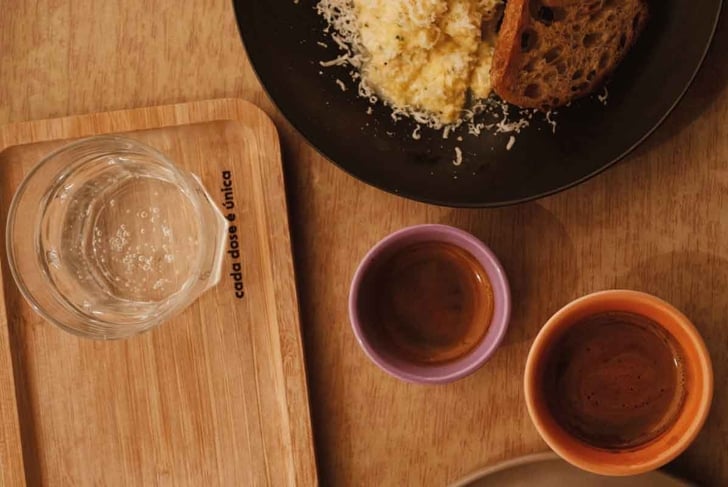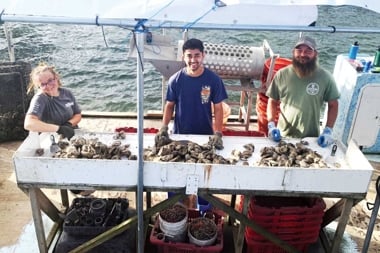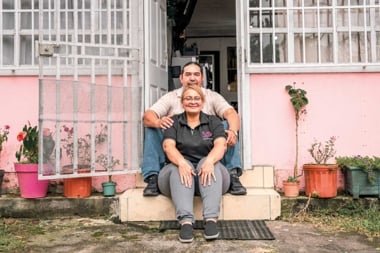
Bears hibernate during the winter. Many plant species enter a period of dormancy. Even hummingbirds slow down. We humans have a thing or two to learn from nature! As the days become shorter and darker, we can create warmth, coziness, and comfort. Small changes to our homes and routines can support our well-being.
Declutter responsibly!
Don’t want it? Don’t just throw it away. See if someone in your community could use it.
Feeling blue?
If you feel down in the fall and winter, you’re far from alone. “For some people, less sunshine can mean a higher risk of depressive feelings,” says Glenda Wallace, MA, RCC. “Simply put, the more sunshine, the more neurotransmitters, the more we feel good. The more darkness, the more melatonin and the more sluggish and tired we feel. This in turn brings on some behaviours such as overeating, oversleeping, less outdoor activity, which can cultivate a negative spiral.”
According to Wallace, the decrease in light can also change our metabolism. “Your brain sends signals to your body to conserve energy, slowing down your metabolism and increasing your hunger,” she explains.
Get outside!
Don’t hibernate so hard that you forget about the outside world! The great outdoors can offer us so much—even in the fall and winter. Make an effort to go outside and get some fresh air. Go for a spooky October walk in the fog, stomp in a rain puddle, or hike to a lookout point to admire the fall leaves in all their splendour. Come winter, embrace cold-weather activities like skiing or snowshoeing.
A foundation of wellness
Here’s the good news, according to Wallace: “We can front-end load our systems with some healthy habits every day.” Wallace recommends the following strategies:
- getting sunlight outside every day (ideally for at least 30 minutes), or using special light boxes that mimic sunlight
- engaging in regular exercise, which releases endorphins
- eating a healthy diet (ask your doctor if you could benefit from vitamin D supplements)
- reducing stress (this may include counselling and medication)
- creating a routine that works for you and includes things you love to do
10 cozy fall activities
- Do a jigsaw puzzle.
- Learn how to make a fancy latte at home.
- Host a board games night.
- Snuggle up and watch a movie.
- Read a book.
- Play a word game like a crossword puzzle.
- Bake a pumpkin loaf.
- Make a fall wreath.
- Knit or crochet.
- Soak in the bath.
Comfy and cozy
In addition to healthy lifestyle habits, we can take a page from a hibernating bear’s book and create our own cozy, comforting haven. Here are a few tips:
- Clean, organize, and declutter. For many of us, chaotic surroundings are not conducive to mental well-being.
- Choose calming colours. This is subjective, but many people find green to be relaxing (perhaps because we associate it with nature).
- Consider using aromatherapy. Some scents (like lavender) can calm us down while others (like citrus) can be uplifting.
- Surround yourself with nature, whether it’s houseplants or foraged pinecones.
- Create a cozy reading nook with soft blankets and a plush chair.
- Put together a coffee or tea station in the kitchen (hot chocolate for the kiddos!).
Cozy, by any other name
Denmark isn’t alone in its embrace of coziness during the dark, cold months of northern winters. While, in Denmark, they refer to this concept as hygge, Norwegians refer to it as koselig and Swedes as mysa.
Hygge, for all!
The Danish concept of hygge (roughly translated as “coziness”) helps people to embrace cold, dark months. “Anything that enhances comfort, coziness, togetherness, and a sense of contentment is prioritized,” Wallace explains. “One of my favourite activities in the wintertime is to create a cozy and warm space by lighting some candles or lighting up the fireplace and inviting some friends over for a cup of tea and conversation.”
She urges us to keep it simple. “It’s about acknowledging the good things in life and appreciating all the simple pleasures of everyday existence. Taking time for yourself and your friends and family can promote a sense of calm, reduce stress, and improve mood.”
What about seasonal affective disorder?
There is a difference between feeling a little sluggish and gloomy, and having seasonal affective disorder (SAD). According to the Canadian Mental Health Association, approximately two to three percent of Canadians will experience true SAD at some point. In contrast, about 15 percent of Canadians will struggle with a milder form. Women are at higher risk than men.
Symptoms of SAD include sleep disruption, fatigue and trouble concentrating, carbohydrate cravings and/or overeating, and withdrawing from social activities.
“If left untreated, SAD can lead to a wide range of risks and complications,” says Glenda Wallace, MA, RCC. “These may include worsening depression symptoms; social isolation; conflicts at work or other relationships; and, in severe cases, suicidal thoughts or behaviours.”
When lifestyle changes fail to bring relief to seasonal blues, SAD may be the culprit. “If you feel like you’re struggling with SAD, it’s important to make an appointment with your family doctor or meet with a counsellor,” advises Wallace.
10 quick hygge habits
- Choose soft lighting rather than harsh overhead lighting.
- Light candles.
- Eat a comforting and nourishing meal.
- Have screen-free time at home with the family.
- Practise gratitude.
- Sit by the fireplace.
- Spend time with loved ones.
- Wear cozy PJs and thick socks.
- Drink a warm beverage.
- Slow down, relax, and don’t try to be productive.
This article was originally published in the October 2025 issue of alive magazine.





